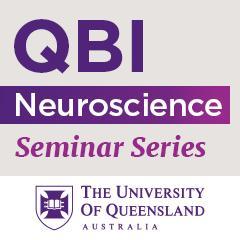Sean Keating
Title: CRISPR-tagging for live-cell analyses of endogenous TDP-43 protein aggregation dynamics in ALS and FTD models
Abstract:
Dysfunction and aggregation of the RNA-binding protein, TDP-43, within neurons is the unifying hallmark of amyotrophic lateral sclerosis (ALS) and frontotemporal dementia (FTD), and is an emerging factor in other neurodegenerative proteinopathies. While loss-of-function and gain-in-toxicity mechanisms of TDP-43-related neurodegeneration have been independently explored, difficulties in simultaneously but separately visualising and modulating normal and pathological forms of TDP-43 in live cells, has left the driving mechanisms and consequences of these concurrent processes unresolved. We used CRISPR/Cas9-mediated fluorescent tagging to investigate how disease-associated stressors and pathological TDP-43 variants alter abundance, localisation, self-assembly, aggregation, solubility, and mobility dynamics of normal nuclear TDP-43 over time in live cells. Oxidative stress stimulated TDP-43 liquid-liquid phase separation into droplets or spherical shell-like anisosomes, which were not formed by over-expressed wild-type TDP-43. Further, nuclear RNA-binding-ablated or acetylation-mimicking TDP-43 rapidly formed anisosomes and inclusions that readily sequestered and depleted free normal nuclear TDP-43. Endogenous TDP-43 sequestered into anisosomes retained high protein mobility and solubility. However, cytoplasmic RNA-deficient TDP-43 formed large, phosphorylated inclusions that occasionally sequestered endogenous TDP-43, rendering it insoluble and immobile, indicating irreversible pathological transition. These findings suggest that RNA-binding deficiency and post-translational modifications, including acetylation, exacerbate TDP-43 aggregation and dysfunction by driving sequestration, mislocalisation, and depletion of normal nuclear TDP-43 in neurodegenerative diseases. Our approach highlights the importance of early and potentially detrimental changes in protein condensation, preceding robust aggregation and or changes in overall protein levels, apparent with the use of these novel endogenous-tagged cell models, which may further serve as useful tools for fluorescence-based screening applications and therapeutic testing.
Matt Kenna
Title: Distinct amygdala to prefrontal connectivity drives fear memory consolidation
Abstract:
Elucidating the neural circuitry that underpins memory formation is critical to understanding how the brain stores information. In fear memory, the initial learning phase is thought to be governed by the basolateral amygdala (BLA), while the subsequent retrieval of the memory is driven principally by the medial prefrontal cortex (mPFC). While it is assumed that a period of consolidation after learning is responsible for the redistribution of the memory trace to the mPFC, a precise mechanism for this process remains unclear. It has been shown previously that direct monosynaptic connections exist between the BLA and mPFC in both directions, forming reciprocal loops of neural activity. Therefore, we posited that this reciprocal connectivity could be driving the consolidation of fear memories. Using activity-dependent labelling in rodents, we have shown that the consolidation of fear memories involves a significant shift in neural activity towards layer 2/3 cells of the mPFC. In addition, we show that a rostro-caudal distribution exists in the connections from the BLA to mPFC, with the rostral BLA preferentially innervating the rostral mPFC and caudal BLA with the caudal mPFC. Furthermore, the consolidated fear engram in the mPFC is predominately driven by rostral BLA engram cells, suggesting that this distinct circuitry pattern may hint at a mechanism for fear memory consolidation. Taken together, these findings indicate that the consolidation of fear memories induces dominant L2/3 activity in the mPFC, which is largely driven by projections from the rostral BLA – perhaps providing a circuitry mechanism for fear memory consolidation.
About Neuroscience Seminars
Neuroscience seminars at the QBI play a major role in the advancement of neuroscience in the Asia-Pacific region. The primary goal of these seminars is to promote excellence in neuroscience through the exchange of ideas, establishing new collaborations and augmenting partnerships already in place.
Seminars in the QBI Auditorium on Level 7 are held on Wednesdays at 12-1pm, which are sometimes simulcast on Zoom (with approval from the speaker). We also occassionally hold seminars from international speakers via Zoom. The days and times of these seminars will vary depending on the time zone of the speaker. Please see each seminar listed below for details.



